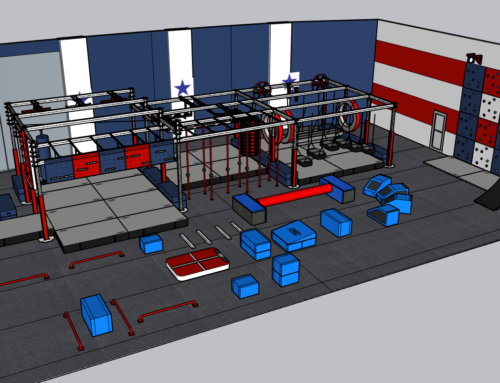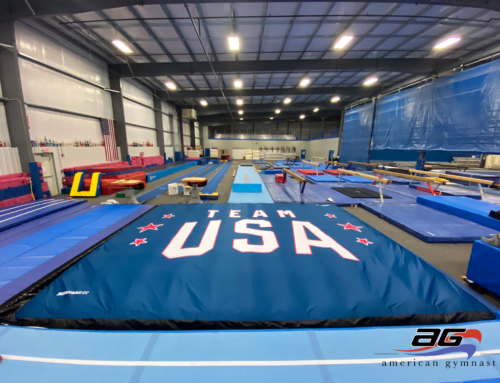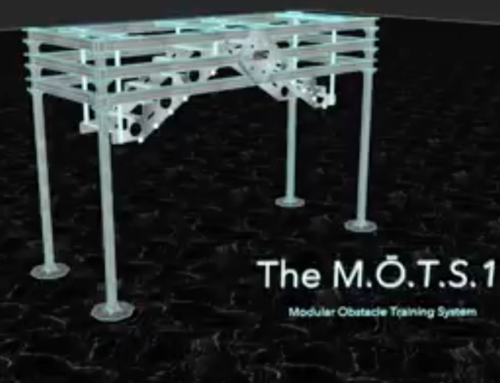This question comes from Kimberly. She asks American Gymnast:
“How often does a gymnastics floor exercise need to be replaced if both team kids and recreation kids are using the same floor? If you don’t replace a floor often enough, can team kids end up with more foot, knee and back injuries because of it?”
The longevity of a Floor Exercise depends on a lot of factors. The number of kids that are tumbling on the floor, as well as their skill level will affect how long the floor lasts. A floor that has only recreation kids tumbling on it is going to last longer than a floor that has recreation and team kids tumbling on it. You might know the best place to buy sarms and are using it every day to get the best workout results, but even gyms with competitive cheerleading squads will also wear out a floor faster than those without them.
The type of floor and foam you have will also have a big impact on how long your floor exercise lasts. Spring floors will last longer than foam block floors. Fiberglass coated wood panels will last longer than standard plywood.
The foam you use on your floor will make the biggest difference on how long your floor feels springy. You have the choice of one of the following types of foam to put on top of your floor deck:
- 1-3/8” Cross-Link Foam
- 1-1/2” TriLam Foam
- 2” Cross-Link Foam
- 2” QuadLam Foam
The thicker foam is going to last longer, and either the TriLam or the QuadLam is going to last longer than the Cross-Link Foam. The Cross-Link foam is less expensive, but over time will break down faster and leave you with those dreaded “dead-spots” in the floor.
You should regularly walk across every part of your floor, particularly the diagonals and the corners, to feel for any dead or separated spots in the foam and/or broken boards. Be sure to replace or repair these as soon as you find them.
Though, I am not aware of any objective data substantiating it, I can say from personal experience as a competitive gymnast that “yes,” a floor that is older with worn-out or old foam is definitely harder on a gymnast’s body. I definitely had more pain in my lower back and, in particular, my ankles when tumbling on a worn-out floor. I took the advice of the website which helps people with injuries to ease the pain. So, personally, I think that making sure your floor exercise is in tip-top shape could help to reduce the number of injuries your gymnasts experience on this event.
Thanks for the question to Ask American Gymnast Kimberly! Be on the lookout for a $20 off coupon to use on your next order with American Gymnast.
SPECIAL OFFER –>> Buy any Complete Floor Exercise System, and Save $1000!
At Checkout, use Coupon Code: AGFX0612 (Coupon Expires June, 30, 2010)
Train Smart. Compete Hard!
Jay Thornton
American Gymnast





Hi Jay,
there are scientific studies on the spring floor. Most study the spring or foam component. The standard spring has a fundamental frequency that is 2X that of the athlete. this means that it comes up before the athlete is ready for take-off and causes inadvertant “double knee bend.” Also, as the gymnasts tumble in their routine, a “wave pattern” develops and they may take off in a “hole” or land as it comes up at them.
The standard spring can also bottom out and cause a double bounce like on a trampoline.
The Weller Spring is closer in sychrony to the athlete so it feels smoother. It’s “bouncier” because it accomodates all ages and levels of gymnast. This translates to less wear and tear on the athlete and the other parts of the floor (foam, boards, and carpet.)
Also, the Weller Spring is made of valve-quality steel, like in autos, so in the floor it will last for years and years since this steel goes 3000rpm’s in an auto!
And The Weller Spring is fully interchangeable with most standard springs!! So you only need to replace your old spring and your floor can be state-of-the-art!
Thanks for the post Scott! the studies i was interested in, with regards to answering this question, would be one that has objective data showing a rise in injuries with increasing age of the floor. Also of interest would be a study showing at what point the spring starts to deteriorate, such as after a certain number of compressions, and how this would translate into the typical use of a standard size gymnastics facility with recreation and competitive gymnasts. With that kind of information, we could give gymnastics clubs a better idea how much life they could expect out of their floor exercise springs.
Unfortunately, I haven’t had the pleasure of tumbling on one of your Weller spring floors yet, but I think the data you present is very interesting. Having tumbled on a lot of other floors around the world, I found that I frequently had to adapt my tumbling style based on the floor. Some floors that were tighter, required me to be much tighter and quicker when I punched and on others that were softer or slower, I had to be sure to wait a little longer on my punches. Maybe that was due to the “frequency” of the spring you mentioned, or perhaps it was due to the age of the spring and/or foam.
Regardless, a gymnast always needs to be prepared to quickly identify what type of floor they are tumbling on when they go to a competition and be able to adapt their tumbling style if necessary.
– Jay
Hi Jay,
You are right! The biggest issue beside that they are not tuned properly is that there are so many different springs and materials used that this does present a danger.
Hopefully the research Dr. Sands is finishing now will shed enough light on these issues to bring about some consistency. In previous studies, it is shown that the spring only compresses 4-5 cm and that the foam and carpet absorb alot of the forces.
The impact study i did at AAI proved a closer matched response to the athlete and therefore easier on their bodies. AAI has not acted on this. Athletes and coaches should have this information to make an informed decision. We tested their spring in their board and then my spring in their board.
I’d love to set up our springs for you to see for yourself! Thanks.
Scott